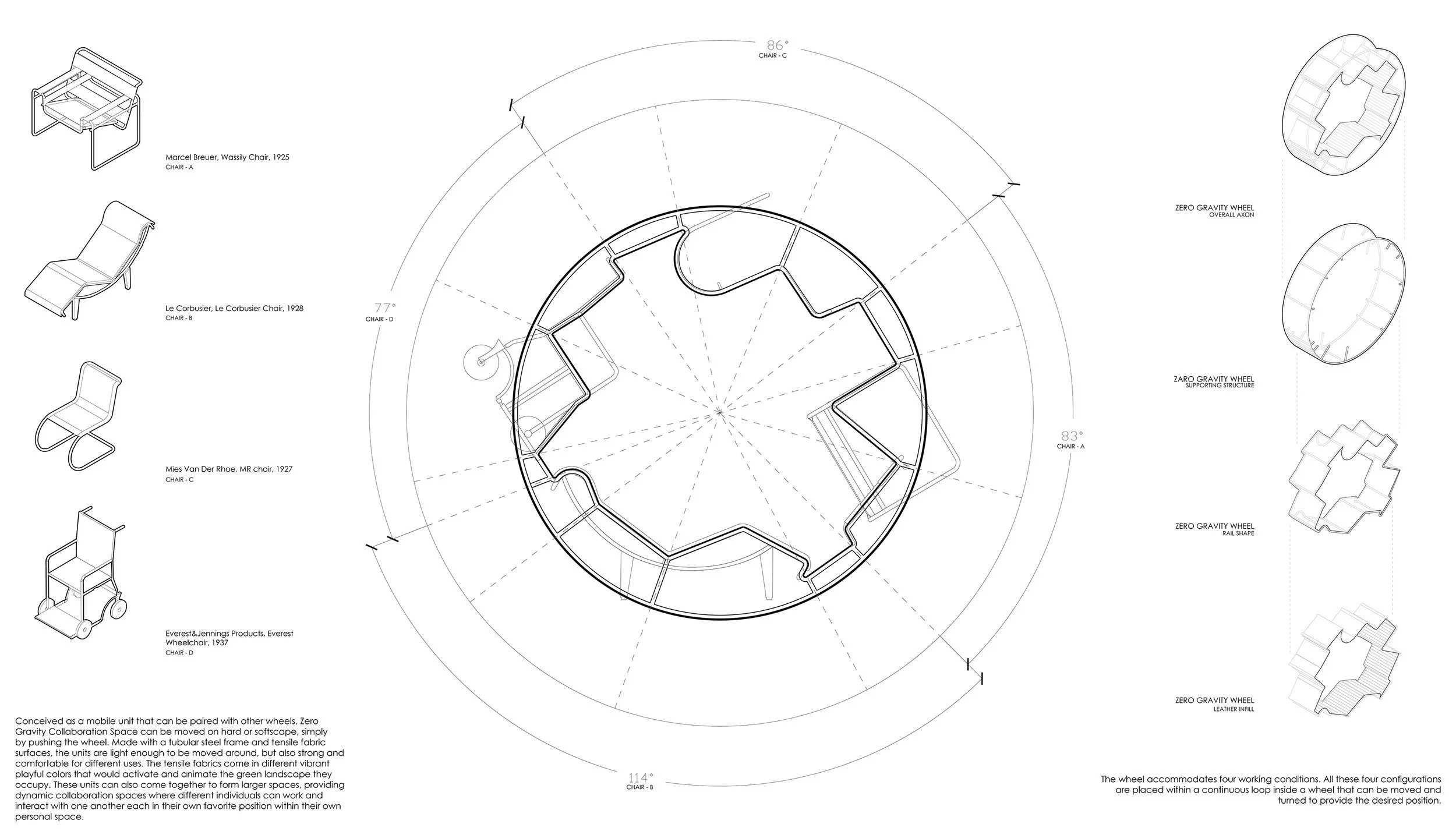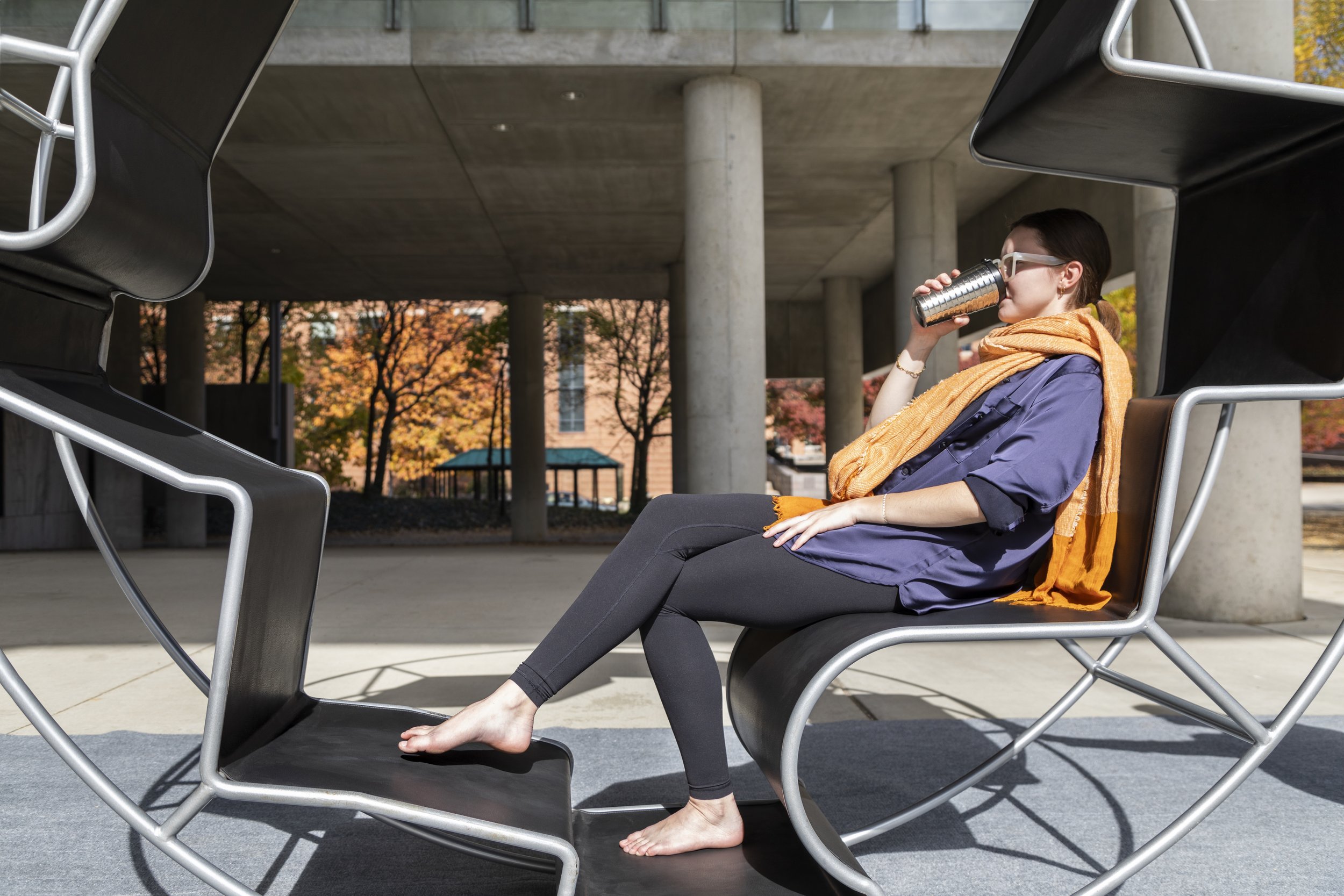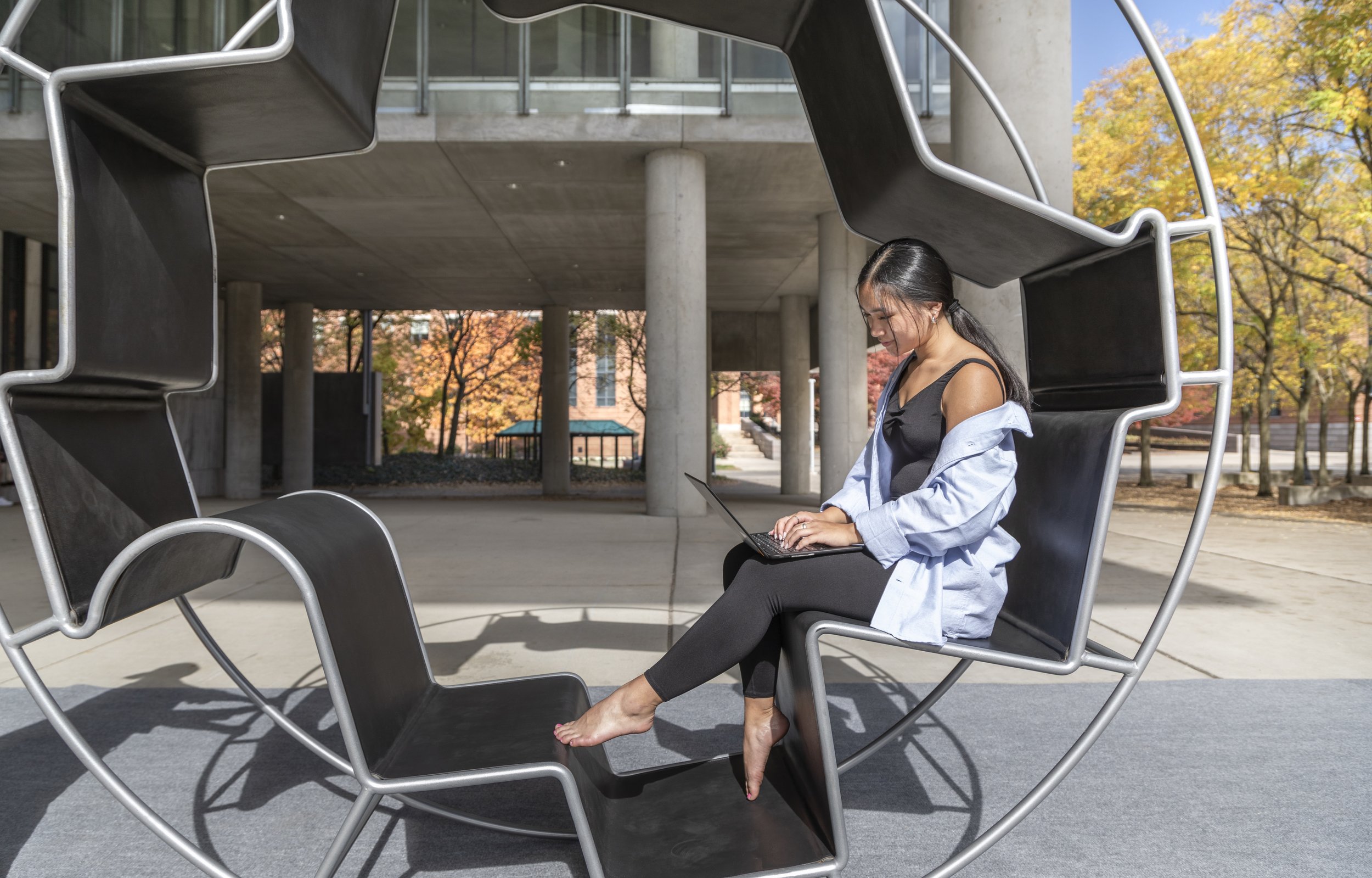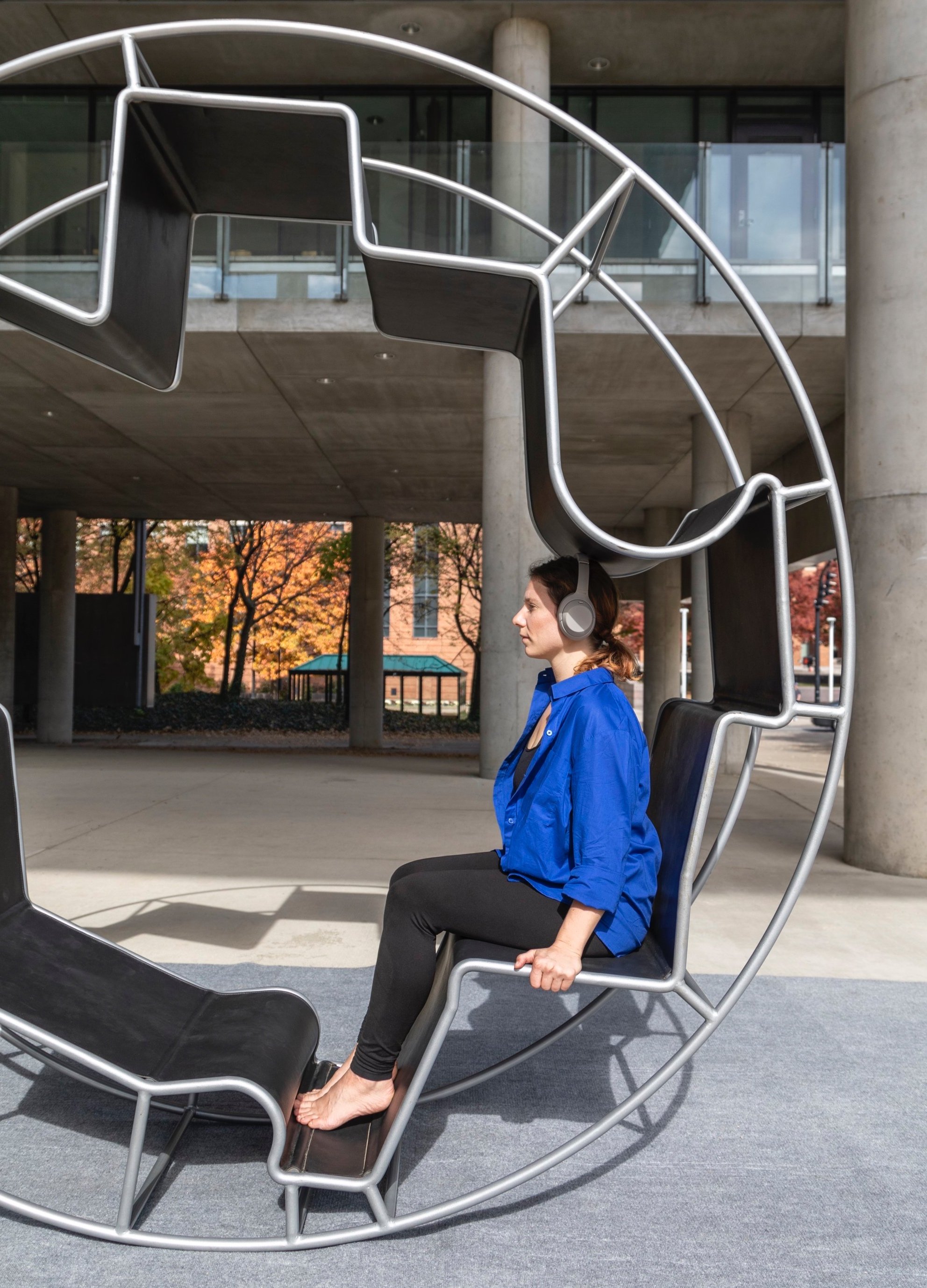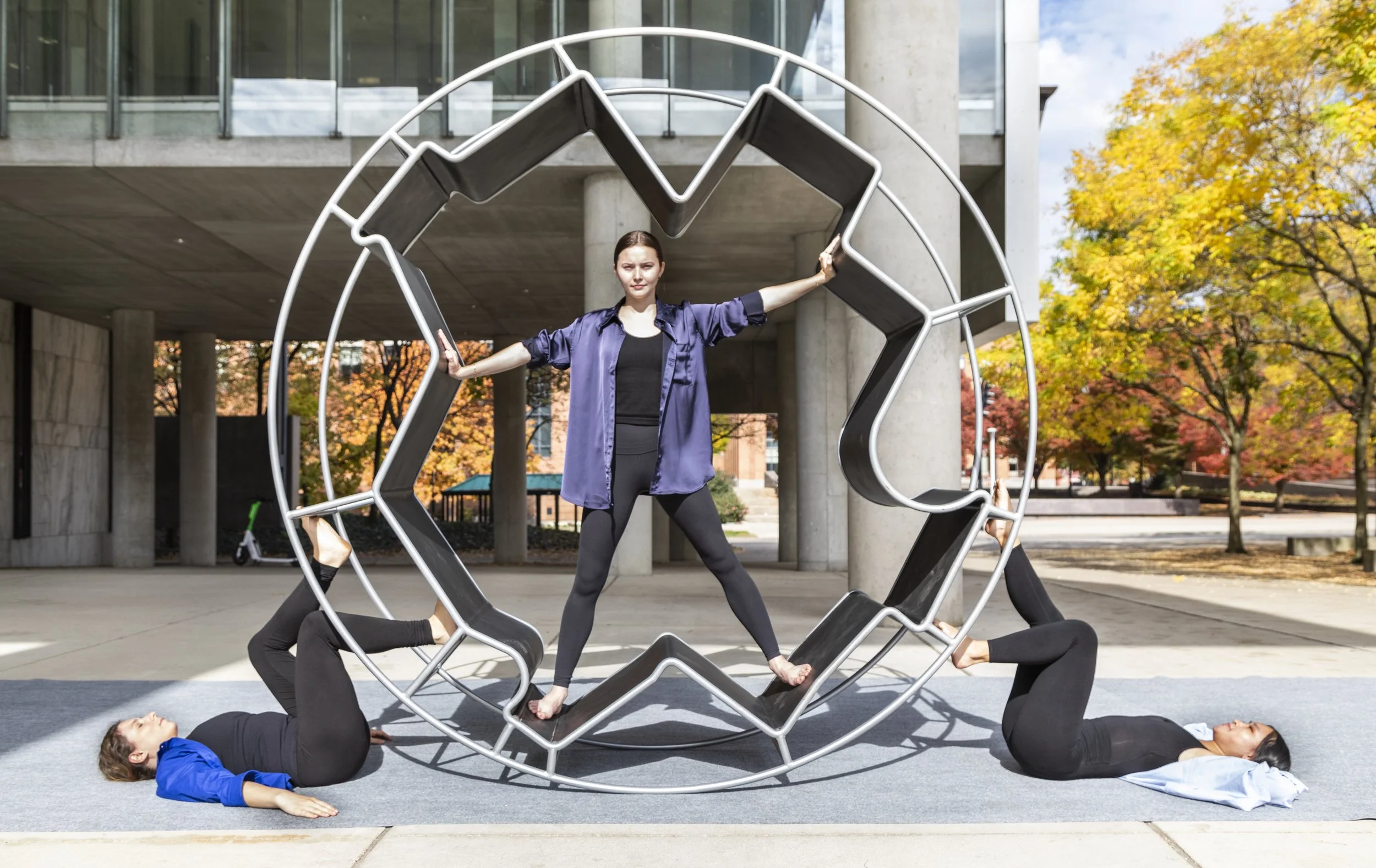ZERO.GRAVITY
ZERO.GRAVITY is a cycle of human habitation; a sequence of spatial circumstances, inscribed within a meandering interior and a circular exterior. The human sphere, no longer a divine or a celestial body, is now a terrestrial orb revolving on the ground. Designed by AN.ONYMOUS in collaboration with UCLA CityLAB for NASA Jet Propulsion Laboratory (JPL), the piece aims to move the work out of the office and encourage new forms of collaboration and interaction with and within the outside environment.
Image courtesy of the Knowlton School
ZERO.GRAVITY is not a chair, but an amalgam of four iconic tubular steel chairs traced along a continuous loop: Marcel Breuer’s Wassily Chair, Mies van der Rohe’s MR Chair, Le Corbusier and Charlotte Perriand’s LC4 Chaise longue, and Herbert Everest and Henry Jennings’ first Folding Wheel Chair. The continuous tubular steel frame scaffolds the body, but also forms the outline of a much larger tube that now cradles it. Users can sit on any of the four prescribed chairs simply by rolling the piece on the ground, or appropriate the interstitial areas to find their own comfort zones, to take new positions, and to adopt unscripted postures.
The human body is the essential component of ZERO.GRAVITY, long conceived within the ideological and geometric constraints of architecture: from the Vitruvian Man drawn within the idealized outlines of circle and a square, the divine reconciliation of the formal and the functional orders of Renaissance humanism, to the Corbusian Modulor conceived from the standards of measure in the twentieth-century modernism, or the universal figure of a disabled body on a wheelchair codified in contemporary building regulations and graphics standards. Here, the body is neither confined nor defined by the circle or the square, the wheel or the chair. The divine circle has been reduced to a skeletal structure, and the square a convoluted vestige of its modern past.
Image courtesy of the Knowlton School
ZERO.GRAVITY has no fixed orientation or position; there is no front or back, up or down. It is a restless, ever-moving object that only finds stability and balance when occupied. The human body is its center of gravity–a prosthetic void only whole and complete with the body inside. But to inhabit the piece, one also has to tame it: a dynamic dance of the two in search for composure. Motion here is the prerequisite for repose and rest. The labor of this intimate interplay is the power that animates the machine.
Awards
Best Urban Furniture of the Year, Prize Designs for Modern Furniture + Lighting 2023.
First Award in Furniture Design (Built), Re-thinking the Future: Architecture, Construction & Design Awards 2023.


